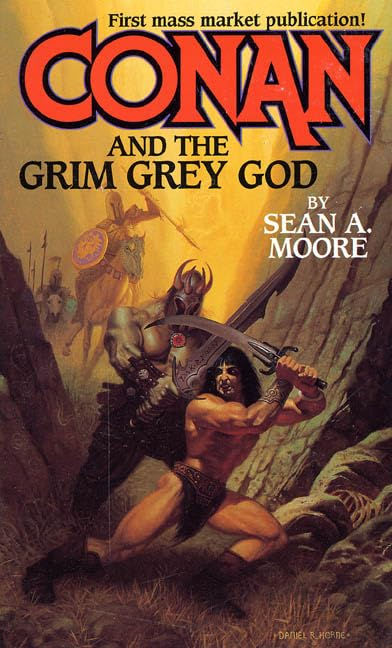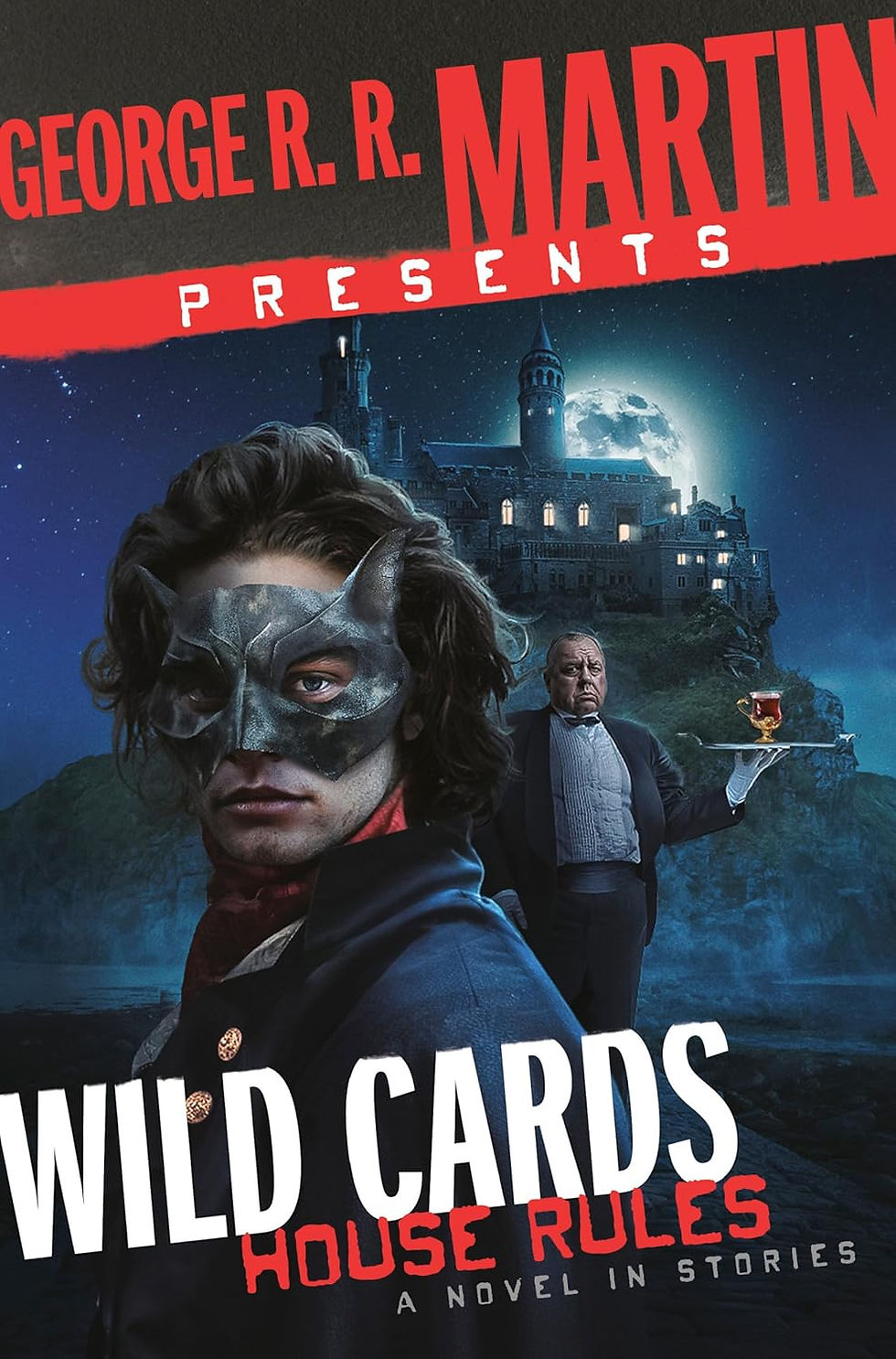From Thongor to Jongor
- Greg O'Driscoll
- Mar 11, 2023
- 4 min read
Updated: Apr 11, 2023

Thongor is Missing!
It’s cookie season for Girl Scouts and, seeing as two of those scouts are my daughters, that means I have spent a lot of weekends supervising a cookie booth. Unfortunately, it has been either cold and windy or just pissing down rain. It was a real gully washer the night I lost Thongor at the End of Time.
My oldest daughter is a cadet now, and we’re supposed to let them take the lead when selling cookies. This means I sat in my folding chair and read Thongor, keeping one eye and ear on things, mostly so no one scammed the scouts or received the wrong amount of change. I read until the sun went down and, strangely, the parking lot lights did not come on. I put my paperback in the side pocket of the folding chair. The rain kept coming down and we made what sales we could.
Unfortunately, when it was time to pack up our cookies, table, and tent, I forgot that good old Thongor was tucked into a pocket of the folding chair. Somewhere between the tent and the van, Thongor at the End of Time disappeared into the deluge—and eternity.
Who Could Replace Thongor?
Losing my copy of Thongor meant postponing my next review. A friend suggested I buy a cheap Kindle version from Amazon. Not a bad idea, except there is something in the sensory suite of a physical book, especially a vintage paperback, that appeals to me. I do have a spare copy that I could read, but the spare is in such pristine condition I’m almost afraid to crack the cover.
All of which means Thongor would have to wait. Not that I have any shortage of books to review. I’ve got barbarians and lost worlds a plenty. Which brings us to Jongor and the Lost Land.
Keeping the unofficial theme of my reviews consistent, I grabbed the nearest book with another amazing Frank Frazetta painted cover. On this one, a muscular he-man takes aim with bow and arrow at an attacking pterodactyl while the obligatory half-naked woman clings to his ankle. The fact that this hero’s name rhymed with the now missing Thongor elicited a chuckle. So be it, Jongor was up at bat.
The Return of Jongor
The title was The Return of Jongor, which meant it was a sequel. Sad to say, I only own the second and third books in this series, but how hard could it be to jump into the thick of things?
At first, the story was just typical jungle hero stuff. Think Tarzan but set in Australia instead of Africa, and Jane came looking for her missing twin brother instead of tagging along with her father. Jongor is American, the son of John Gordon (Jon-Gor, get it?) and his wife, who became marooned in the Australian wilderness where the hero was eventually born.
If Australia seems a little barren to be the home of a jungle hero, worry not. Jongor roams the Lost Land, a prehistoric jungle valley hidden by a huge mountain range surrounded by impenetrable deserts. The evil Mur, monkey-like descendants of the mythical island Mu, use magic crystals to conveniently befuddle the minds of any surveyors or airplane pilots who get too close.
That last detail is what raises Jongor above the level of a mere imitation. The author, Robert Moore Williams, takes a moment here and there to justify things other writers would accept as conventions of the genre.
Conventions of the Jungle Hero Genre
Against his express orders, our brave heroine, Ann instead of Jane Porter, tears off into the jungle, looking for Jongor. In most of these kinds of stories, this is a chance to show the impetuousness or stubbornness of the female lead in the face of “superior” male reasoning. Yet we soon discover Ann’s flight into the jungle was due to the sinister influence of a Mur chieftain using one of the previously mentioned crystals to distort her reasoning.
Along similar lines, Jongor’s mastery of the dinosaurs inhabiting the Lost Land (did I forget to mention those?) comes from wearing an arm ring set with yet another magic crystal. Most jungle heroes command the obedience of lesser beasts, if they can control them at all, simply because they were raised among them.
Better yet, the mysterious queen of a lost race that hopelessly longs for the hero (trust me, there’s always one of those) doesn’t try to kill Ann. She’s genuinely happy Jongor has found someone to love. There are also a few final twists concerning Queen Nesca and the nature of her people, the Arklans, which I don’t want to spoil here. It isn’t anything too momentous, but the Arklans were different enough from the many lost races found in Tarzan paperbacks to take me by surprise.
All these things combined to create a story that was more than just another Tarzan knock-off. Jongor doesn’t reinvent the genre but he doesn’t slavishly follow it either. Sadly, the one cliché Jongor can’t escape is an unflattering portrayal of “blackfellows”, the aboriginal inhabitants of Australia. Nothing is ever perfect.
Less Edgar Rice Burroughs and More Abraham Merritt
If Lin Carter’s Thongor could surprise me the way Jongor has, I might be searching a little harder for a new copy. I can honestly say the final chapters of The Return of Jongor were not what I expected when I read the first ones. What began as Tarzan by another name winds up reading like something from the final chapters of a novel by Abraham Merritt.
There is a sense of creeping doom and lost grandeur hovering over Queen Nesca and the Arklans. Of course, the final cataclysm removes all evidence of the adventure. However, optimism is mingled with the gloom. Humanity is seen as the hopeful new bearer of future glories, inheriting the world from ancient empires once more technically advanced and now fallen into ruin.
As ever, the lingering question remains, will we avoid their mistakes or repeat them?



Comments